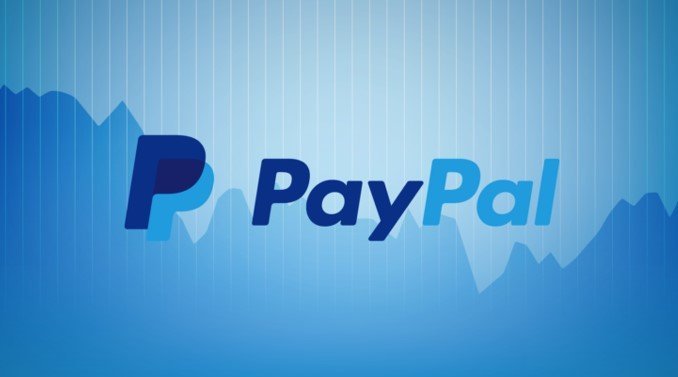Once a subsidiary of eBay, PayPal has grown into a financial giant, surprisingly outperforming its former parent company. Many people wonder how this digital payment platform makes so much money and grows so rapidly. The secret lies in a diverse revenue model that goes far beyond simple online transactions. PayPal operates almost like a bank, generating income from fees, credit services, and even the money sitting in user accounts.
The Core of PayPal’s Revenue: Transaction Fees
The most significant source of PayPal’s income comes from the fees it charges on transactions. The company cleverly offers two main types of accounts, Personal and Business, each contributing to its revenue stream in a specific way.
For personal accounts, which are popular among freelancers, online shoppers, and individuals sending money to family, PayPal takes a cut when a debit or credit card is used. This fee is typically around 2.9% plus a fixed amount of $0.30 per transaction in the US. This model ensures that even small, everyday purchases generate consistent income for the company.
Business accounts, used by online merchants and service providers, operate on a similar fee structure. When a customer buys a product, the seller pays PayPal a percentage of the sale. While the standard rate is often the same as for personal transactions, these fees add up quickly due to the high volume of sales processed by businesses.
These fees are not set in stone and can change, but they form the backbone of PayPal’s financial success. It’s a high-volume, low-margin business that powers its growth.
Cashing in on Global Commerce: International Payments
PayPal’s reach extends across the globe, and this international presence opens up another major revenue channel. When money crosses borders, PayPal charges additional fees on top of the standard transaction fee. This is a crucial detail for freelancers and businesses working with international clients.
If you receive a payment from a different country, PayPal applies a currency conversion fee. This means users often face two separate deductions from their incoming funds: the standard transaction fee and the international payment fee. This two-part fee structure makes cross-border payments highly profitable for PayPal.
This model is a primary earner for the company, as it has become an essential tool for the global freelance economy and international e-commerce. Millions of users rely on it for seamless overseas transactions, and PayPal capitalizes on every single one.
Charges for Accessing Your Funds
Getting money into your PayPal account is one thing, but moving it out can also come with a cost. While a standard bank transfer that takes a few days is usually free, PayPal offers faster, more convenient options that generate revenue. These withdrawal charges are a key part of their business model.
For users who need instant access to their funds, PayPal charges for transfers to a debit card. This convenience comes at a price, making it a popular and profitable feature. The fees can vary, but they provide a steady income stream from users who value speed.
- US Debit Card Withdrawal: A flat fee of $1.50 per transaction.
- Non-US Debit Card Withdrawal: A fee of $1.50 plus currency conversion rates.
- Check Withdrawal: If you request a physical check, PayPal charges a service fee of $1.50.
- Foreign Transaction Withdrawal: An additional fee of 1% of the amount may apply.
These small, individual fees might not seem like much, but when multiplied by millions of daily withdrawals, they contribute significantly to PayPal’s overall earnings.
Special Features and Premium Accounts
Beyond standard transactions, PayPal has developed specialized services and premium account tiers that users can pay for. These offerings provide enhanced functionality for businesses and individuals, creating another layer of revenue.
One such feature is PayPal.me, which allows users to create a custom payment link for easy P2P (peer-to-peer) transfers. When money is received and withdrawn through this link using a card, it is subject to the standard 2.9% + $0.30 fee. It simplifies payments while adhering to their core fee structure.
For serious merchants, PayPal offers a “Pro” account. Unlike a free personal account, the PayPal Pro account comes with a monthly subscription fee, typically around $30. This subscription gives businesses access to advanced features like a fully customizable checkout process on their own website, turning a free service into a premium, recurring revenue source.
The Hidden Streams: Interest on Your Money
One of the least-known but most powerful ways PayPal makes money is through the interest earned on user balances. Every day, millions of users around the world hold money in their PayPal accounts, creating a massive pool of cash.
This collective balance, often called “float,” doesn’t just sit there. PayPal invests this money in liquid assets and earns interest on it. While individual user balances might be small, the total sum is enormous, allowing PayPal to generate substantial interest income.
This revenue source is never officially advertised to users, but it is a standard and highly profitable practice for payment processing and financial technology companies. It’s a quiet, background process that constantly adds to PayPal’s bottom line.
Venturing into Credit and Loans
Expanding beyond just payments, PayPal has firmly entered the world of credit. The company offers its own credit card and “Buy Now, Pay Later” services, which have become incredibly popular with online shoppers.
PayPal Credit often tempts users with offers like “no interest if paid in full in 6 months” on purchases over a certain amount, like $99. This is a great deal for disciplined buyers, but it’s also a major moneymaker for PayPal.
If the balance is not paid off within the promotional period, a high Annual Percentage Rate (APR) is applied, often around 19.9% or higher, calculated from the original purchase date. This interest charged to users who carry a balance is a significant and growing part of PayPal’s revenue portfolio.
Frequently Asked Questions about How PayPal Makes Money
Is a personal PayPal account completely free to use?
A personal account is free to open and to send money directly from a linked bank account. However, you will be charged a fee for receiving payments for goods and services or when you use a debit or credit card to send money.
What is the main way PayPal earns its revenue?
The primary source of PayPal’s income is transactional fees. The company charges a percentage plus a small fixed fee on most payments processed through its platform for both personal and business accounts.
Do I get charged for withdrawing money from PayPal?
While standard transfers to a bank account are typically free, they can take several business days. PayPal charges a fee for instant transfers to a debit card and for requesting a physical check to be mailed to you.
How does PayPal make money on international payments?
For international transactions, PayPal earns money in two ways. It charges the standard transaction fee and also applies a currency conversion fee when exchanging the money from one currency to another.
Does PayPal earn interest on my account balance?
Yes, this is one of its hidden revenue sources. PayPal pools the balances held in all user accounts and invests that money in low-risk, liquid assets to earn interest, which contributes significantly to its profits.








Leave a Comment